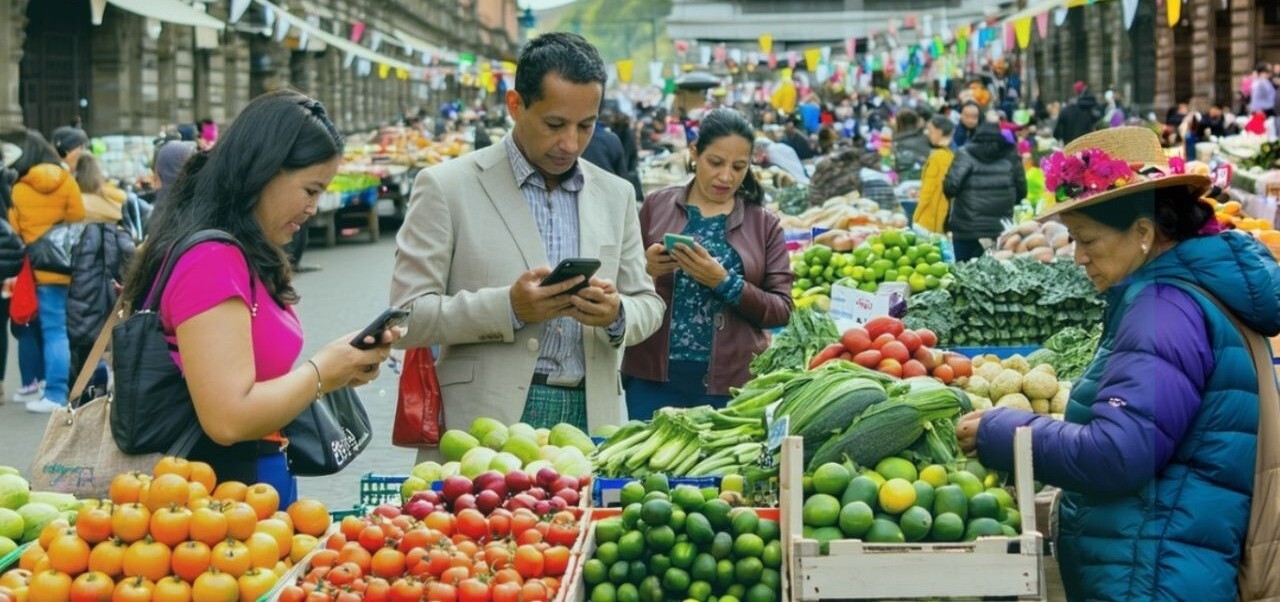
Accelerating Alternative Payments in Peru
A Paradigm for Emerging Economies?
Cash use in Peru has declined at a rate similar to that of other comparable markets thanks to a surge in the popularity of bank-owned e-wallets. However, adoption of Peru’s national Real-Time Payments (RTPs) system has been slower. We examine steps Peru could take to drive RTP use, digitalize the Peruvian payments market and deliver broad-based economic benefit across the country.
Peru entered the world’s Top 50 economies in 2024, thanks in part to average GDP growth of 2.4% over the previous five years – which itself followed twenty years of explosive growth from the early 2000s.[1] While volatility has not disappeared from the Peruvian economy, the country now looks poised for the kind of sustained growth that could deliver significant and wide economic benefits. As ever, developments in payments will be central to this economic growth.
Banking and Payments in Peru
Peru’s banking sector is highly concentrated, with four banks holding 72% market share and 85% of the payments market. These banks have launched highly popular e-wallets, of which Yape, owned by the Banco Credito de Peru (BCP), is the most popular with 70% market share.
The use of cash at Point of Sale has declined from more than 55% in 2019 to around 34% today. While this is broadly in line with other fast-growing economies, Peru’s domestic RTP platform remains under-utilized five years after launch, as the graphic below shows. The majority of non-cash transactions pass through e-wallets, which currently account for 22 times more transactions by volumes than the national RTP system.[2]
Peru’s RTP Platform Remains Under-Utilized 5 Years After Launch
 Source: KoreFusion analysis
Source: KoreFusion analysis
Why RTPs Matter for Broader Digitalization
RTPs are a proven cornerstone for the full digitalization of an economy – and the associated benefits. In the UK, Faster Payments (the UK’s national RTP scheme) was launched in 2008, and now accounts for 45% of all B2B payments, or around US$1.6 trillion.[3] RTPs help businesses and consumers by speeding up the movement of money in an economy, eliminating wait times for transactions and settlements which previously took days – as well as making it easier for businesses and individuals to manage cash flows and budgeting. In Peru’s case, RTP adoption would also encourage more businesses into the formal economy and provide better transaction data to fuel credit and lending and, by extension, more economic growth – especially for SMEs and microbusinesses.
 Source: KoreFusion analysis
Source: KoreFusion analysis
Despite these potential benefits, Peru has lagged behind other emerging economies when it comes to RTP adoption. As the above graphic shows, Peru’s performance in RTP most closely resembles that of the Philippines. Like the Philippines, Peru’s RTP rail is owned by a consortium of banks and is (as of yet) not subject to a regulatory mandate. Both countries also have well-developed private e-wallet products that outperform local RTP rails. RTP regulation in Peru describes how banks can use RTP, rather than requiring its use; furthermore, existing peer-to-peer (P2P) and peer-to-merchant (P2M) rail volumes are not directed towards the RTP rail as they have been in India, Thailand, and elsewhere.
The absence of a regulatory mandate for RTP in Peru acts as a brake on its development and is arguably compounded by the structure of Peru’s banking industry. At present, the Peruvian banking sector is considered “concentrated”,[4] and has a less competitive fintech ecosystem than its Latin American peers, with no access to RTP rails for non-bank payment market participants. These facts suggest a comparatively closed banking industry which limits access to digital payments and merchant acquiring to a small group of bank players.
A Concentrated Banking Sector Inhibits RTP Growth
 Source: KoreFusion analysis
Source: KoreFusion analysis
What Happens Next
For any RTP system to flourish, four elements are required: the political will to create a regulatory framework and ecosystem that encourages RTPs; a legal mandate that supports RTP adoption by using RTPs for government and welfare payments; critical mass, which is achieved by driving existing P2P and P2M volumes to an RTP rail; and the technical capacity to build an RTP infrastructure and platform, manage risk, and create a great user experience.
At present, Peru has created an RTP platform that is only available to banks – while this availability could be extended to include fintechs and others, there is scope to drive further growth in all four of the elements we describe. More broadly, our analysis suggests that there is significant room for growth in Peru’s adoption of cashless payments, RTPs and a fully digitalized payments environment. At KoreFusion, we estimate that US$ 520B of value in the Peruvian payments market could still be digitized, bringing benefits across the board.[5]
In support of this thesis, we find that at present, non-cash payments account for just 39% of all transactions, with 56% of P2P payments still made using cash, alongside 61% of B2B and 35% of consumer-to-government (C2G) payments. These are relatively high levels for a World Top 50 economy like Peru: further digitalization through RTP payments would see such high levels of cash use decline.
Perhaps of greatest concern for the future development of the Peruvian economy is the somewhat sluggish growth seen in card payments as well as RTP. Non-cash payments as a whole grew by 9.7% between 2022 and 2023, while payments including cash grew by 7% over the same period. In other words, electronic payments are replacing cash at a very slow rate – despite the success of recent financial inclusion programs and more widespread adoption of debit cards.
Electronic Payments Are Replacing Cash: But Cash Still Dominates
 Source: KoreFusion analysis
Source: KoreFusion analysis
Likewise, most B2B payments in Peru still use Real Time Gross Settlement (RTGS) and bank transfers, not RTP – and 19% of B2B payments are still made in cash. To support digitalization in the wider economy, reduce costs, improve efficiency, and deliver new, innovative services for consumers and businesses, the Peruvian authorities should consider enhancing their existing payments infrastructure to build in capacity for future growth and ensure resilience – in essence, greater transaction processing and switching capacity. On current trends, cards will simply be replaced by e-wallets, and RTPs will have a limited impact on the volume of cash payments – a situation that Brazil is currently experiencing with its PIX wallet system.
The Banco Central de Reserva del Perú (BCRP) should also consider creating an autonomous authority, responsible to the country’s regulator and in dialog with international bodies, that could manage a pan-industry RTP rail available to banks and non-bank players alike. This body could also promote innovation and competition between banks, foster growth in fintechs, and run financial education and inclusion initiatives to encourage wider participation in the formal economy.
Finally, by driving/mandating volume from existing rails – in particular, e-wallets – to the RTP rail, the BCRP could, over a relatively short timescale, improve adoption of RTP and speed up overall digitalization of the Peruvian economy to deliver broad-based economic benefit for citizens across the country, and further propel the country up the ranks of the world’s economy.
KoreFusion optimizes SMB payments strategy across 80 countries. We help banks, brands, and fintechs develop embedded payment and financial services for SMBs. For more information, please contact hello@korefusion.com.
[1] The World Bank, “Peru Overview”: https://www.worldbank.org/en/country/peru/overview
[2] Source: World Bank Data and BCRP (Peruvian Central Bank)
[3] Juniper Research, 20 February 2024: “The UK B2B Payments Market” https://www.juniperresearch.com/research/fintech-payments/core-payments/uk-b2b-payments-research-report/
[4] Data from 2023 Herfindahl-Hirschman Index (HHI) for Peru’s banking sector. The HHI is a common measure of market concentration and is used to determine market competitiveness. The index was calculated using bank assets data from the BCRP.
[5] KoreFusion analysis leveraging data from BCRP, Gobierno del Peru, Congreso del Peru, INEI (Instituto Nacional de Estadística e Informática), McKinsey Global Payments Map, AAP, Apoyo Consultoria, Confiep, Consultora Afi, and Gestion.pe.
Author:

KoreFusion
Share:
